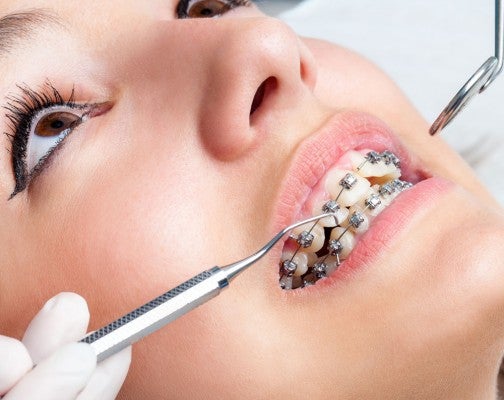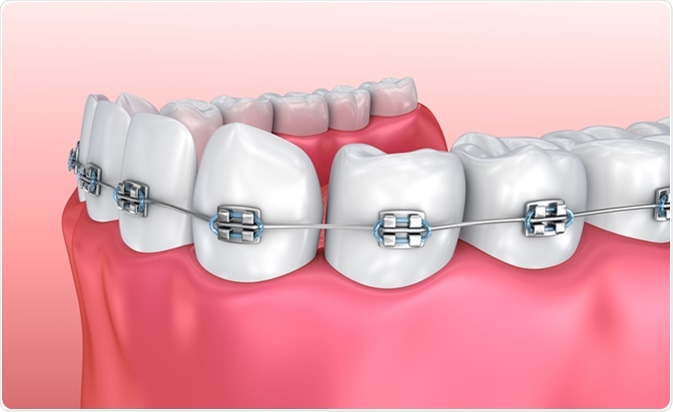Comprehensive Overview to Orthodontics Procedures for Remedying Oral Misalignments
Recognizing the ins and outs of each procedure, including their systems, benefits, and prospective drawbacks, is crucial in making informed decisions about one's orthodontic therapy. As we browse via the comprehensive overview to orthodontic treatments for dealing with oral imbalances, the complex information of each technique will certainly unravel, dropping light on the path toward a harmonious and functional oral placement.
Orthodontic Procedures Summary

Regular modifications and tracking are critical parts of orthodontic therapy to guarantee development is on track and to make any kind of necessary adjustments along the method. By undertaking orthodontic treatments, patients can not only accomplish a straighter grin yet also improve their general dental wellness and function.
Conventional Braces: Just How They Work
When taking into consideration orthodontic therapies for oral imbalances, typical dental braces stand out as a time-tested method for fixing teeth placing. Typical dental braces include brackets, cables, and bands that interact to use continual stress on the teeth, gradually moving them into the preferred positioning. The brackets are affixed to the teeth making use of an unique adhesive, and the wires are threaded via the braces. By adjusting the stress of the cords, orthodontists can manage the instructions and pressure related to each tooth, guiding them right into appropriate alignment with time.
One key aspect of just how conventional braces job is the process of bone renovation. As pressure is put on the teeth through the dental braces, the bone bordering the teeth is improved to sustain the new tooth positions. This renovation is vital for the long-term stability of the dealt with alignment. People will certainly need routine changes at the orthodontist's workplace to make certain the braces remain to use the appropriate stress for effective teeth motion.
Unnoticeable Aligners: Disadvantages and pros
Unseen aligners provide a discreet and practical option to typical braces for correcting oral misalignments. These clear, personalized trays are virtually invisible when worn, making them an appealing option for individuals seeking a more aesthetically pleasing orthodontic treatment. Among the key benefits of unnoticeable aligners is their removability, enabling for much easier upkeep of dental hygiene compared to standard braces. Clients can remove the aligners prior to consuming or cleaning their teeth, minimizing the danger of food getting stuck in the device and simplifying the cleansing procedure.

Surgical Orthodontic Options
Surgical treatments in orthodontics present feasible alternatives for addressing complicated oral imbalances that may not be successfully resolved with traditional orthodontic therapies. While undetectable aligners and standard dental braces can correct many orthodontic issues, certain cases call for medical treatment to attain optimum outcomes. Surgical orthodontic choices are commonly advised for extreme malocclusions, substantial jaw discrepancies, and cases where the underlying bone structure needs modification to achieve proper alignment.
One typical surgical orthodontic procedure is orthognathic surgery, a dds which includes rearranging the jaws to remedy practical concerns such as trouble eating or talking. This surgical procedure is frequently carried out in collaboration with an orthodontist who aids align the teeth before and after the procedure. Surgical orthodontics may likewise include procedures to expose influenced teeth, remove excess gum tissue, or improve the jawbone to develop a more harmonious face account.
Before thinking about surgical orthodontic options, clients undertake a comprehensive assessment to identify the requirement and potential advantages of such treatments. invisalign. While surgical procedure may seem complicated, it can significantly enhance both the feature and aesthetic appeals of the smile in sedation dental care instances where conventional orthodontic therapies drop short
Retainers and Post-Treatment Treatment

Failure to comply with post-treatment care instructions can result in regression, where the teeth slowly relocate back in the direction of their initial placements. Regular retainer wear, excellent dental health, and regular oral check-ups are important for maintaining the results accomplished with orthodontic surgical treatment and making sure the lasting security of the dealt with oral placement.
Verdict
In verdict, orthodontic procedures offer various choices for dealing with oral misalignments. Traditional braces utilize metal brackets and wires to move teeth right into proper placement. Invisible aligners provide a more discreet alternative however might not appropriate for all instances. Surgical orthodontic alternatives are available for a lot more serious misalignments. Retainers are typically used post-treatment to keep the new alignment. On the whole, orthodontic treatments can efficiently boost oral health and visual appearance.
As we browse with the comprehensive overview to orthodontic procedures for dealing with dental misalignments, the intricate information of each method will certainly unravel, dropping light on the path towards a functional and unified oral placement. - cumming braces
One of the most typical orthodontic therapies is the use of dental braces, which consist of steel brackets and cords that apply gentle stress to slowly move teeth right into the desired placement.When thinking about orthodontic treatments find here for oral misalignments, traditional dental braces stand out as a time-tested technique for remedying teeth placing. Furthermore, undetectable aligners might not be suitable for complicated orthodontic concerns that need even more substantial teeth movement, as they are typically suggested for light to modest cases. Retainers are tailor-made orthodontic tools developed to hold teeth in their dealt with settings after the completion of orthodontic therapy.